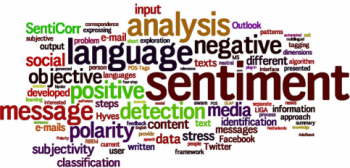Semantic Publishing and Voice of the Customer understanding for the media&content industry
The reason for publishing being a key industry to take advantage of text analytics is also the reason why the industry finds it so hard to engage with the technology.
 The reason? Text. And a lot of it. The publishing world has struggled to understand how data relates to text and understand the value of data. This is changing, too slow for many, as the industry moves from seeing themselves as a ‘product’ based company (e.g. making books, e-books or physical) to a ‘service’ based company. In other words smart publishers are starting to see their service to customers as the creator and curator of information. This content is abled to be mixed and mashed-up in dynamic ways across a number of formats. This service is not bound, saddle-stitch or otherwise, to a specific product. This 180-degree perspective change requires publishers to think more directly about customer experience in the same way more traditional service based industries like hospitality or even retail banking.
The reason? Text. And a lot of it. The publishing world has struggled to understand how data relates to text and understand the value of data. This is changing, too slow for many, as the industry moves from seeing themselves as a ‘product’ based company (e.g. making books, e-books or physical) to a ‘service’ based company. In other words smart publishers are starting to see their service to customers as the creator and curator of information. This content is abled to be mixed and mashed-up in dynamic ways across a number of formats. This service is not bound, saddle-stitch or otherwise, to a specific product. This 180-degree perspective change requires publishers to think more directly about customer experience in the same way more traditional service based industries like hospitality or even retail banking.


 Have you ever wondered why certain products or services undergo radical changes or even disappear from the market (and sometimes return with another trade name)? Does it depend only on the volume of sales or other factors come into play? To answer these questions, we should introduce the concept of “
Have you ever wondered why certain products or services undergo radical changes or even disappear from the market (and sometimes return with another trade name)? Does it depend only on the volume of sales or other factors come into play? To answer these questions, we should introduce the concept of “ The communication channels are numerous and also allow to interact in different ways through various media (images, audio, video, etc.). And what matters most to us is that this interaction
The communication channels are numerous and also allow to interact in different ways through various media (images, audio, video, etc.). And what matters most to us is that this interaction





